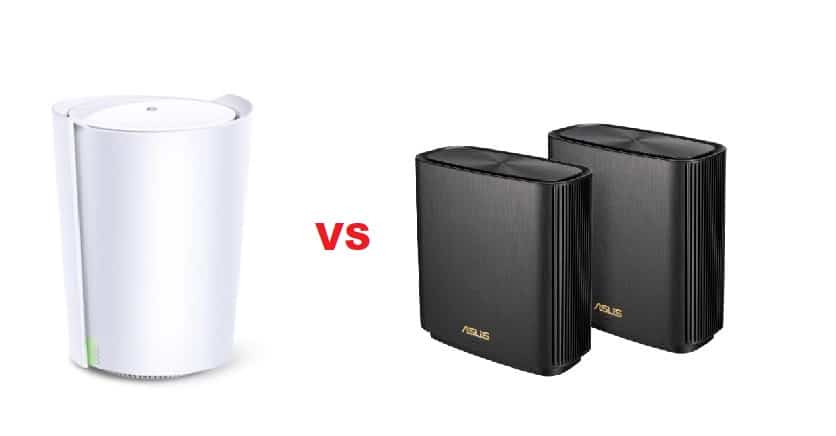
Purchasing a mesh wireless system has become a promising choice for people who need a high-speed internet connection and want to get rid of internet errors. In the past few years, the advent of Wi-Fi mesh systems has widened and hundreds of units have been launched by different companies. So, if you have to opt for a new Wi-Fi system, we are sharing TP-Link Deco X90 Vs. Asus ZenWiFi AX (XT8) comparison to help you purchase the right one!
TP-Link Deco X90 vs Asus ZenWiFi AX (XT8)
Asus ZenWiFi XT8
This is a tri-band system that’s available at $449.99 and there is a two-device kit. It is designed with an advanced Wi-Fi system and mesh networking features that help remove the dead wireless zones in the home. It has easy installation and setup and you will get a free subscription for a lifetime when it comes down to the network security tools and parental control. There are two nodes in the unit, which helps extend the wireless network coverage to over 5000 sq./ft.
It is available in white as well as black color and the nodes have a cylindrical shape. However, these nodes are short and tend to be thin. The front side has an LED indicator which tends to glow in blue color during the setup while the indicator glows in white color when there is a strong signal. In addition, the indicator has a red color when the signals are lost and the weak signals result in yellow light. The unit has three Gigabit Ethernet ports as well as a power switch, a 3.1 USB port, and a 2.5 LAN port.
The LAN ports of this unit can be used to create an Ethernet connection and it’s perfect for people who want to use the 5GHz connection. It has been designed with 802.11ax technology and has WPA3 encryption technology, promising a secure internet connection. In addition, there is MU-MIMO technology available for seamless simultaneous data streaming. If you are connected to the 2.4GHz band, the maximum internet throughput is 574Mbps while the 5Ghz band offers 1201Mbps speed.
Since there are two 5GHz bands, the second can reach a speed of over 4804Mbps, which is pretty amazing. Every node of this unit is designed with six internal antennas, which promises top-notch signal reception, hence a strong internet connection. As far as the performance is concerned, there is a 1.5GHz quad-core CPU, which promises faster performance without chances of overheating. Last but not least, there are various parental control tools and anti-malware features, so you can keep an eye on the browsing.
TP-Link Deco X90
When it comes down to the Deco series of TP-Link, the company has launched an array of mesh systems but the X90 is undeniably the most powerful one. It has been designed to support over two hundred devices. Similarly, it can be used in the home with over six bedrooms and it has a tri-band configuration, which promises top-notch internet speed. This Wi-Fi mesh system works best with the HomeSheild service that offers parental controls and network security.
There are two Deco units in the system and one of them is designed to replace the router while the second one can be used as an extender. Having said that, it can be used to set up a wireless internet connection and you can also use it as an extender as well. Each unit is designed with three transceivers. The 2.4GHz band offers 574Mbps speed while the first 5GHz band offers 4.8Gbits speed and the second 5GHz band offers 1.2Gbits speed.
The unit is designed with four-by-four MU-MIMO technology that maximizes the internet throughput. The units have an upright and tapered shape and have a plain white appearance. Every dock is designed with a power socket and there is an LED indicator on the base that changes its color according to the network system. The yellow indicator means the system is booting up while the green means that the internet connection has been established.
As far as the software is concerned, there is a smartphone app available for quick setup – the app can be used to browse the internet-connected device, enable and create the guest networks, and configure port forwarding. In addition, the smartphone app will send notifications when new devices are connected to the internet.